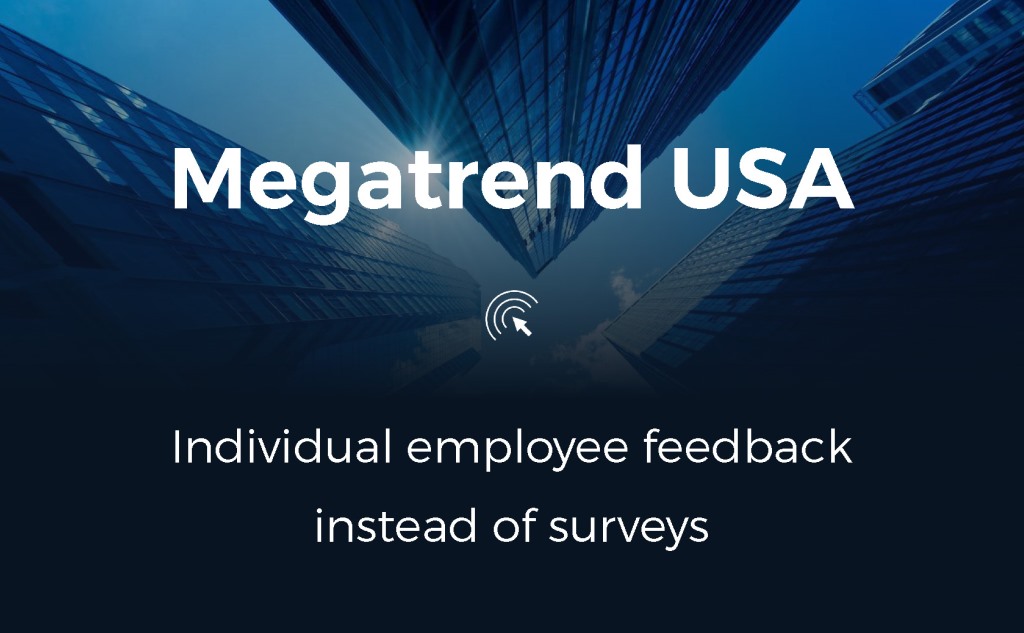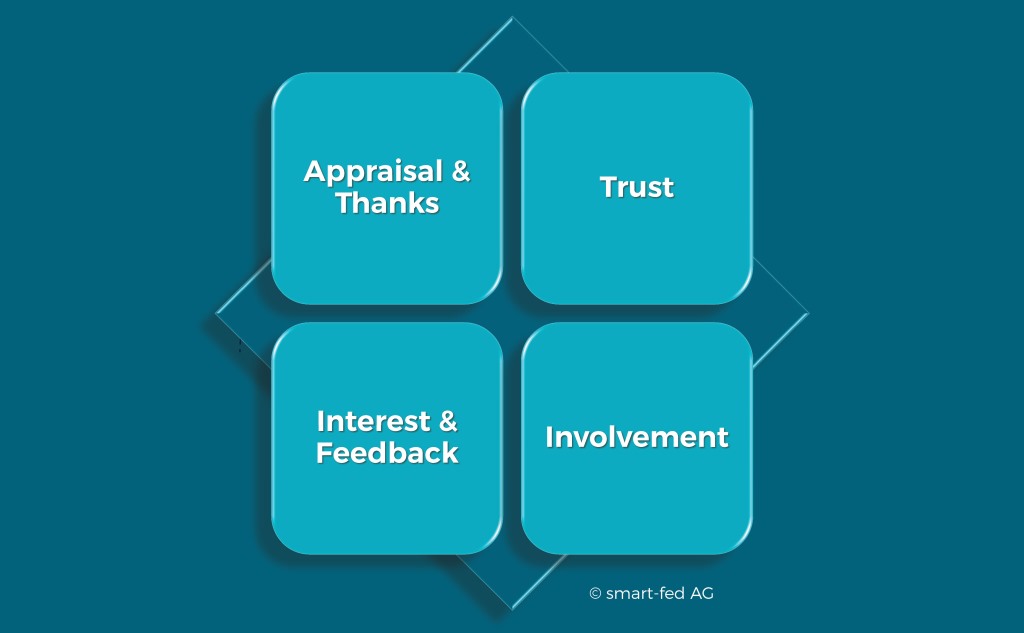Microsurveys vs. listening
EX Management
Listening to employees is an important prerequisite for professional and sustainable employee experience management. For this purpose, microsurveys are repeatedly propagated as an instrument. But can this solution really fulfill the claim behind it?
If you want to know how your own employees experience their company, their working environment or their job, you have to take into account a large number of very different influencing factors.
In addition, there are aspects such as diversity, macro- and microclimates, or organizational changes that significantly influence perception depending on time, place, and person.
And even if the perception of an influencing factor is still halfway identical within a certain employee group*, this does not automatically mean that the factor has the same relevance for everyone.
The consequence of this is that if you really want to listen to your employees, you have to offer them the opportunity to give individual feedback at any time and on any topic.
The pitfalls of microsurveys
However, micro-surveys in particular are not convincing on these points. There are two main reasons for this.
First of all, it is a fact that, as with the classic employee survey, this is a watering can principle. In other words, a few questions on an isolated topic and time are distributed to all employees. In the best case, the topic is then repeated every six months or annually.
It is therefore hardly possible to speak of truly open “listening” at all times and on all topics in microsurveys.
It does not help to find out in advance a main topic that is currently being discussed within the organization. At best, this will hit the nerve of a single group, but only if you succeed in asking the right questions at the right time.
But the biggest trap of microsurveys lurks elsewhere.
Sending out surveys on a weekly or monthly basis inevitably leads to a high level of survey fatigue sooner or later.
This results in two scenarios.
If you are content with a low response rate and initiate improvement measures on a thin data basis, the shot will backfire very quickly. The likelihood of missing the actual relevant problems and challenges on site is more than high. Employees do not really feel that their concerns and experiences in their working environment are being taken seriously.
If, on the other hand, employees are directly or indirectly forced to give their feedback, the whole thing becomes a farce right from the start. It becomes an annoying compulsory exercise in which the employees, out of sheer frustration, only give extreme evaluations – all positive or negative. But this has nothing to do with real perception.
* related e.g. to gender, age, affiliation, function, hierarchical position, location, etc.

Be that as it may, microsurveys are therefore hardly suitable in the long run to give employees the feeling of being heard. This instrument quickly becomes blunt and is also very time-consuming.
Many companies think they can get around these problems by asking very general questions in the microsurveys and constantly repeating these questions. Quasi a barometer of the mood of the organization.
But here, too, the fatigue effect occurs very quickly with the same consequences as described above. In addition, hardly any substantially relevant findings can be obtained on the basis of this general survey.
Listening, authentic & relevant
Direct and personal dialog with employees would be what can truly be called active listening.
But personal dialog also has a few weaknesses. Not only is it not always possible and useful for various reasons, but it is also not systematically recorded and evaluated.
The SMART FED feedback platform offers an alternative. It allows employees to decide for themselves when and on what they want to give feedback. In doing so, anonymity is given high priority with special rules for the evaluation. This is a key prerequisite for honest and authentic feedback.
Feedback at SMART FED is always intrinsically motivated from the basic approach. This ensures that the feedback always has relevance.
SMART FED is thus the first feedback platform that really listens to employees instead of asking them questions.
⇒ Author: Martin Mechlinski / SMART FED
Microsurveys vs. listening
EX Management

Listening to employees is an important prerequisite for professional and sustainable employee experience management. For this purpose, microsurveys are repeatedly propagated as an instrument. But can this solution really fulfill the claim behind it?
If you want to know how your own employees experience their company, their working environment or their job, you have to take into account a large number of very different influencing factors.
In addition, there are aspects such as diversity, macro- and microclimates, or organizational changes that significantly influence perception depending on time, place, and person.
And even if the perception of an influencing factor is still halfway identical within a certain employee group*, this does not automatically mean that the factor has the same relevance for everyone.
The consequence of this is that if you really want to listen to your employees, you have to offer them the opportunity to give individual feedback at any time and on any topic.
The pitfalls of microsurveys
However, micro-surveys in particular are not convincing on these points. There are two main reasons for this.
First of all, it is a fact that, as with the classic employee survey, this is a watering can principle. In other words, a few questions on an isolated topic and time are distributed to all employees. In the best case, the topic is then repeated every six months or annually.
It is therefore hardly possible to speak of truly open “listening” at all times and on all topics in microsurveys.
It does not help to find out in advance a main topic that is currently being discussed within the organization. At best, this will hit the nerve of a single group, but only if you succeed in asking the right questions at the right time.
But the biggest trap of microsurveys lurks elsewhere.
Sending out surveys on a weekly or monthly basis inevitably leads to a high level of survey fatigue sooner or later.
This results in two scenarios.
If you are content with a low response rate and initiate improvement measures on a thin data basis, the shot will backfire very quickly. The likelihood of missing the actual relevant problems and challenges on site is more than high. Employees do not really feel that their concerns and experiences in their working environment are being taken seriously.
If, on the other hand, employees are directly or indirectly forced to give their feedback, the whole thing becomes a farce right from the start. It becomes an annoying compulsory exercise in which the employees, out of sheer frustration, only give extreme evaluations – all positive or negative. But this has nothing to do with real perception.
Be that as it may, microsurveys are therefore hardly suitable in the long run to give employees the feeling of being heard. This instrument quickly becomes blunt and is also very time-consuming.
Many companies think they can get around these problems by asking very general questions in the microsurveys and constantly repeating these questions. Quasi a barometer of the mood of the organization.
But here, too, the fatigue effect occurs very quickly with the same consequences as described above. In addition, hardly any substantially relevant findings can be obtained on the basis of this general survey.
Listening, authentic & relevant
Direct and personal dialog with employees would be what can truly be called active listening.
But personal dialog also has a few weaknesses. Not only is it not always possible and useful for various reasons, but it is also not systematically recorded and evaluated.
The SMART FED feedback platform offers an alternative. It allows employees to decide for themselves when and on what they want to give feedback. In doing so, anonymity is given high priority with special rules for the evaluation. This is a key prerequisite for honest and authentic feedback.
Feedback at SMART FED is always intrinsically motivated from the basic approach. This ensures that the feedback always has relevance.
SMART FED is thus the first feedback platform that really listens to employees instead of asking them questions.
* related e.g. to gender, age, affiliation, function, hierarchical position, location, etc.
⇒ Author: Martin Mechlinski / SMART FED







